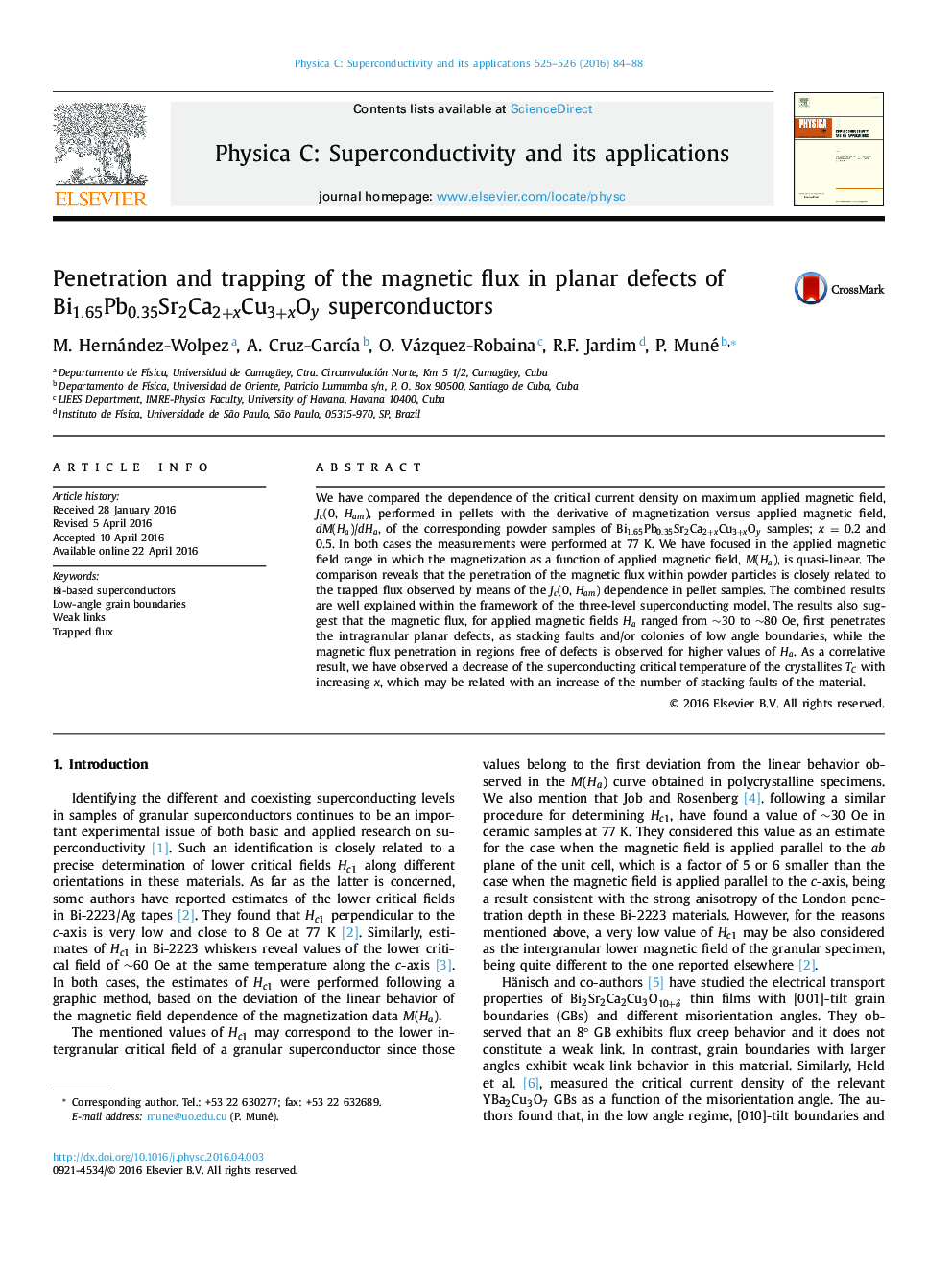| Article ID | Journal | Published Year | Pages | File Type |
|---|---|---|---|---|
| 1817339 | Physica C: Superconductivity and its Applications | 2016 | 5 Pages |
•Phys. Rev. B 79 (2009) 014515•Phys. Rev. B 46 (1992) R3187.•Physica C 351 (2001) 281•Physica C 256 (1996) 33.
We have compared the dependence of the critical current density on maximum applied magnetic field, Jc(0, Ham), performed in pellets with the derivative of magnetization versus applied magnetic field, dM(Ha)/dHa , of the corresponding powder samples of Bi1.65Pb0.35Sr2Ca2+xCu3+xOyBi1.65Pb0.35Sr2Ca2+xCu3+xOy samples; x = 0.2 and 0.5. In both cases the measurements were performed at 77 K. We have focused in the applied magnetic field range in which the magnetization as a function of applied magnetic field, M(Ha), is quasi-linear. The comparison reveals that the penetration of the magnetic flux within powder particles is closely related to the trapped flux observed by means of the Jc(0, Ham) dependence in pellet samples. The combined results are well explained within the framework of the three-level superconducting model. The results also suggest that the magnetic flux, for applied magnetic fields Ha ranged from ∼30 to ∼80 Oe, first penetrates the intragranular planar defects, as stacking faults and/or colonies of low angle boundaries, while the magnetic flux penetration in regions free of defects is observed for higher values of Ha. As a correlative result, we have observed a decrease of the superconducting critical temperature of the crystallites TC with increasing x, which may be related with an increase of the number of stacking faults of the material.
